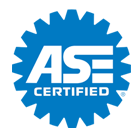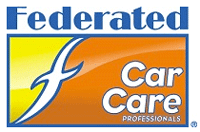The Part You've Never Seen (Flat Tires and Solutions)
Posted January 30, 2022 9:56 AMThey say your vehicle has one, but you've never seen it. And you might not even know it if you stumbled on it accidentally.
We're talking about the jack, that tool that allows you to lift one corner of the vehicle up so someone can change a flat tire.
So you say you'd never try to change a flat anyway, so you don't care where it is. But one day, you may find yourself in a spot where you're stranded with no cell service and you'll need to at least know the basics of what to do.
Well, here's the ironic part. Many of today's vehicles don't even have jacks and spares! Recently, manufacturers have been saving weight by supplying another solution for a flat tire, such as an inflator kit that has a tire sealant in it, or a small compressor. If your vehicle has one of those, it's a good idea to get to know how to use it before you need to use it. Hopefully you'll be able to call roadside assistance and they can take care of things, but circumstances may prevent help from coming for a long time. The next time you're here at All Things Automotive & Diesel Service for routine maintenance, ask one of our pros to show you the basics of your vehicle's flat tire tools. Consider watching an online video, too; there are plenty out there and may be specific to your make and model.
Some vehicles have a space-saving spare, a smaller one that is meant to get you on the road long enough to find a place to have it repaired or replaced. Those vehicles will also have a jack. Then there are vehicles that have a full-size spare tire and a jack. Again, you may prefer to call roadside assistance, but if no one is available or reachable (which is sometimes the case in a major storm), you may have to fix your own flat.
Some drivers do a "dry run" of changing a tire in their driveway during daylight hours so they at least know where the jack and spare are and how to use them. Our service experts may be able to help you locate each part and give you some tips. And again, there are many videos online that can show you the fundamentals of jacking your make and model of vehicle.
Nobody relishes a flat tire. You may be lucky and never have to change one. But in this case, a little knowledge is better than no knowledge at all. In the unlikely case you are stranded at the side of a highway at night in the middle of the rain with no cell service, you'll at least be one step ahead.
All Things Automotive & Diesel Service
1997 Walton Ave #C
Idaho Falls, ID 83401
208-523-3903
Bad Vibes (Disc brake rotor problems)
Posted January 23, 2022 11:01 AMIf you were to name the most important safety feature on your vehicle right now, what would your answer be? A lot of driving experts would agree that it’s your brakes. Most newer vehicles use a well-engineered and efficient style of brakes called disc brakes.
The name disc brakes comes from one of the components: a disc attached to the wheel hub that is squeezed by parts called calipers. If you’ve ever ridden a bicycle with hand brakes, you probably have seen how they squeeze against the rim of the bike wheel to stop the bike. It’s similar to the way your vehicle’s calipers squeeze against the disc rotor, with added parts called brake pads attached to the calipers that are what create the friction and stop your vehicle.
Here’s why disc brakes need regular maintenance. Over time, that friction creates wear and tear on the brake pads and the rotors, and you’ll start to see the signs. Your brakes may have one of the 3 “S” sounds: squeaking, squealing, or scraping. The sound is usually the first sign of brake pad wear which can lead to rotor damage. Soon you may notice a pulsating or vibration when you brake. That’s because your once smooth and straight rotor disc is warping from the heat generated from friction. Or it may be due to wear. Eventually, your brakes will take a longer distance to stop your vehicle, and the rotors can have grooves carved into them.
When you start noticing any of these signs, it’s a good idea to have them inspected by a trained technician. They will measure the rotor thickness, check wear patterns for grooves and heat discoloration, and see how much of the brake pads remain. They will also check to make sure all brake components are moving freely, check your brake fluid, and look for corrosion.
Most vehicle manufacturers require worn or damaged rotors to be replaced, not resurfaced. It’s all part of a complete brake job, replacing pads and the brake hardware parts along with the rotors. It reduces the chance of premature failure.
How often you will need your brakes serviced depends on the manufacturer’s recommendations, your driving habits, and the environment you live in. Your service facility can recommend the best replacement parts based on those factors.
Regular maintenance and attention are vital for keeping your brakes performing like they are designed to. Remember, your brakes are your vehicle’s most important safety feature.
All Things Automotive & Diesel Service
1997 Walton Ave #C
Idaho Falls, ID 83401
208-523-3903
How Far We've Come (Newer Vehicle Technology)
Posted January 16, 2022 10:10 AMAutomotive design has come a long way since the days of the Model T, especially when it comes to safety technology. You can thank computers for a lot of the latest innovations. Here are a few that have been making their mark in recent years.
Adaptive cruise control. This is cruise control with a brain. Not only will adaptive cruise control keep your vehicle going at a steady speed, it will also slow it down and even stop it if the vehicle ahead of you slows down and stops.
Automatic emergency braking. We've all been distracted while driving, and you've probably been in a situation where the driver ahead of you has suddenly stopped. Or maybe your attention wandered for a minute and you looked up to see your vehicle closing in fast on the car ahead of you. (After all, there are a lot more distractions in your vehicle these days.) New systems that use cameras, lasers and other types of sensors will warn you to start braking. If you don't heed the warning, they'll put on the brakes for you.
Blind spot warning. We all worry about hitting a car approaching from behind and on either side if we are changing lanes. Rearview mirrors cover some blind spots but they're not foolproof. Enter the blind spot warning system; it warns you with a noise or a light if a vehicle is in a spot you might not be able to see.
Lane departure warning. We all try to stay in our lane, but sometimes our attention wanders. If you start to drift out of your lane, new warning systems using cameras and other sophisticated sensors will tell you to get back in your lane. Some send an audible warning, others use a vibration or warning light. Some will even steer your vehicle back into the lane.
Rearview camera. There was a time when trucks and SUVs were involved in horrible accidents because the drivers couldn't see what was behind them as they backed up. Children and pets were among the tragic victims. Now, inexpensive rearview cameras are required in the U.S. and Canada, saving lives and providing much more peace of mind for drivers of vehicles with rear visibility issues.
It's important to make sure this safety technology is working correctly for these systems to be effective. Your service facility can check and maintain these systems as the manufacturer recommends.
All Things Automotive & Diesel Service
1997 Walton Ave #C
Idaho Falls, ID 83401
208-523-3903
The Best Book that's Not a Best-Seller
Posted January 9, 2022 10:58 AMSometimes the movie is better than the book, sometimes it's the other way around. But when it comes to your vehicle, the best book of all is the owner's manual. The plot is simple: Owner wants long life and dependable performance from the vehicle, manual has the way to achieve that long life and dependable performance.
And yet, it's amazing that some people will own a vehicle for years and never even crack this book. They'll only read it when they absolutely have to, for things like finding out how to change the clock.
Ok, so you're probably not going to rush right over to your glove box and start reading the owner's manual cover to cover. We know that. But just think of what you can get out of it.
Consider this. Those who wrote or helped write this book include the engineers who designed it and the people who tested and refined it. They know more about your vehicle than anyone, period. They know how long a part is likely to last and what you need to do to take care of it. They know how far a distance or how long a time you can drive before you have to change certain fluids in it. They know what temperature it can reach before things will start to break.
And they've put your vehicle model through torture, testing it in the absolute worst conditions to see how to make it stand up to more abuse than it will ever receive. They've then torn it down, examined it and, in many cases, redesigned the parts to make them even better.
And they've put down—in fairly minute detail—this blueprint that, if you and our experts at All Things Automotive & Diesel Service follow their suggestions, will make it very likely that your vehicle will serve you well for a long time. If you don't follow those suggestions, all bets are off.
We didn't even mention that the owner's manual tells you how to operate everything in your car. How to adjust the heat and air conditioning, how to pair your smartphone with the audio system, how to program your key fob so it won't sound the horn when you lock your vehicle.
Have you lost your manual or did you buy a vehicle that didn't come with one? Many are available either online or in paper form. If you don't know where to begin with such a long book, try a couple of pages a week, just three minutes. You’ll discover your vehicle does things you never even knew it could do. And the movie will never be as good.
All Things Automotive & Diesel Service
1997 Walton Ave #C
Idaho Falls, ID 83401
208-523-3903
Breathe New Life into Your Engine (MAF sensor replacement)
Posted January 2, 2022 8:55 AMIf you’ve noticed your vehicle is hard to start, stalling, or has lost power, the culprit may be a part with an odd name: the MAF sensor. You may have never even heard of a MAF sensor, but it’s important that it be working correctly, or you may be experiencing some fairly significant engine issues.
All vehicles bring in air and direct it through an air filter before it goes into your engine, where it mixes with fuel to provide power to get you going. There’s a tube-like device with a sensor inside it that measures how much of that mass of air is passing through. That’s why it’s called a mass air flow sensor, or MAF sensor. If the MAF sensor isn’t working right, the engine’s computer can’t figure out the right amount of fuel to mix with it, and your engine may hesitate or stall. Sometimes this will cause your Check Engine Light to come on, and any time it does that, make sure you have your vehicle checked by a professional, so you’ll know what’s going on.
When you take your vehicle into your service facility, a technician will thoroughly check the system to see just where the problems are. If your air filter is dirty, your MAF sensor may get dirty too, which might be causing the problems. You may find your fuel economy isn’t what it used to be either.
There are other things that can cause the same symptoms, too, such as a leak in a vacuum hose. It’s also possible that the electrical connector between the MAF sensor and the engine has broken.
The technician can use electronic diagnostic equipment to help pinpoint the exact problem or problems, replace worn parts, and test drive your vehicle to make sure it’s working correctly.
It’s also a good idea to make sure your air filter is changed regularly. A dirty air filter can contribute to a MAF sensor failure. One of the big benefits of having your vehicle regularly maintained at one facility, is they know your vehicle. So, they keep track of which of your vehicle’s parts should be periodically replaced before problems develop.
If you keep clean air heading into your engine, it can help your engine work efficiently, and with the power it was engineered to deliver. Isn’t that a breath of fresh air?
All Things Automotive & Diesel Service
1997 Walton Ave #C
Idaho Falls, ID 83401
208-523-3903
What's in a Number? (What Tire Numbers Mean)
Posted January 1, 2022 7:34 AMYou've probably never paid much attention to the writing on the sides of your tires, but they contain a wealth of information. There's a long combination of letters and numbers that can tell you a whole lot about what tires your vehicle was designed to be riding on. Let's check out this example found on an SUV: P245/70R17 108T.
The first letter, P, means it's intended for passenger vehicles. If there's no letter, it means it's a metric tire. If there's an LT at the beginning or end that means a tire designed for light trucks.
Moving on to our example, the 245 shows how wide the tire is in millimeters from sidewall to sidewall. The number that follows in our example, 70, means the height of the tire is 70% of its width. The letter after that in our example, R, describes the type of tire (on this vehicle, radial). Following that is the diameter in inches, in our SUV example, 17 inches.
How much load the tires' sidewalls are designed to take is what that next number is all about (108 in our example). The higher the load index, the more weight the sidewalls can take. And the last letter is the speed rating of the tire, in our example, T. The further along in the alphabet that letter is, the higher its speed rating. So now you know what those letters and numbers mean. But why are they important?
When you are getting ready to replace those tires, those numbers are telling you what the original equipment was when your vehicle was new. Sticking with the same rated tires is always a good idea. If you don't know what you're doing, trying different sized tires and wheels can cause real issues when it comes to performance and safety, considering all the computerized systems now found on vehicles. When in doubt, consult your service advisor when it comes to buying new tires. He or she knows what those tire numbers and letters mean… and a whole lot more.
All Things Automotive & Diesel Service
1997 Walton Ave #C
Idaho Falls, ID 83401
208-523-3903















